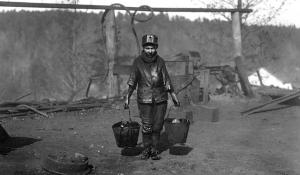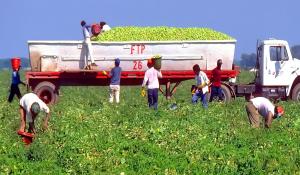
Sixteen Million. That’s how many people globally are trapped in forced labor in the private sector, according to a 2016 report from the International Labour Organization. Besides these 16 million, untold others are subjected to labor abuses in global supply chains daily, such as forced overtime, harassment, withheld wages, exposure to toxic chemicals, and other abuses.
You don’t have to look hard to find a news story reporting recent cases of workplace abuses in the supply chains of major fashion brands. It is confusing that so many fashion brands have corporate social responsibility programs (CSR) and regularly use audits to check workplaces for abuses, yet we still face an enormous human rights crisis in global supply chains.
While it is important that corporations make commitments and progress to address supply chain issues, the truth is they vary widely in their effectiveness. Some companies have made progress through CSR programs (as noted in our Toxic Textiles report, Nike and Target are improving their chemical management policies at the factory level). Unfortunately, a vast majority of CSR initiatives have not resulted in the needed changes. CSR programs around environmental concerns are often more successful than those addressing labor issues.
Environmental impacts are often easier for corporations to monitor and measure, and energy efficiency, clean energy, and packaging reduction projects save companies money. Therefore, environmental CSR programs are easier to implement and often pay for themselves, while programs impacting workers are often more costly.
However, there is a different model that has proven successful in multiple industries: worker-driven social responsibility (WSR) programs. These which place workers at the center of the designing and implementing the solutions. It makes sense, as workers are the ones who know what conditions are on the ground in their industries.
Unfortunately, top-down CSR efforts often impose challenging standards onto suppliers that are often already struggling to keep prices low and meet high product demands.
“The worker-driven social responsibility model puts the power to set and enforce safety standards with market consequences in the hands of workers,” says Sarah Newell, director of outreach and communications for the Worker-driven Social Responsibility Network (WSRN).
The Differences Between CSR and WSR
Enforceability: CSR efforts are voluntary, which means there is no one effective enforcement mechanism to ensure that companies uphold their commitments; whereas WSR is legally binding between worker representatives and the brands. This holds brands accountable that are profiting off workplace abuses.
Workplace Monitoring: CSR monitoring is conducted by auditors who are often rushed, have limited training, and are paid by brands. The results of these audits are rarely shared with workers or shoppers. WSR provides thorough workplace monitoring conducted by independent, well-trained individuals. WSR also places greater emphasis on worker interviews. Through WSR, the results of the monitoring are shared with the workers.
Complaints: In CSR, complaints often go to the employer, brand, or a brand-contracted organization; this structure does not put the workers’ needs at the center, rather it puts workers at risk for retaliation if they speak up. The WSR model has an independent body responsible for complaints, so workers are not at risk for retaliation, resulting in the mechanism actually being used and workplace issues being resolved.
Supplier Support: Due to the structure of global supply chains, corporations seek the lowest price for their products, which puts pressure on suppliers to cut costs—often labor costs—ultimately harming the people who make the products. With WSR, brands are required to provide financial support to suppliers so that the suppliers can comply with labor laws and standards without going out of business.
Specificity: CSR standards often do not account for risks or dangers specific to an industry and do not reflect an understanding of the issues facing workers. Through WSR models, worker organizations create codes of conduct specific to their industries and workplaces; the people with the greatest understanding of the issues develop the standard.
Transparency: CSR initiatives usually don’t share the names and locations of their suppliers, whereas WSR efforts are public and transparent.
Worker Success After Rana Plaza
In April 2013, the Rana Plaza factory collapsed in Bangladesh, killing over 1,100 workers and injuring over 2,500 more. The Bangladesh Accord, an agreement that was created in the aftermath, is one successful example of WSR.
“Before its collapse, two of the factories in the [Rana Plaza] building were inspected and certified as ‘safe’ by CSR-style monitoring programs,” Newell says. “In May of [2013], the Bangladesh Accord on Fire and Building Safety launched; unlike existing, previous corporate social responsibility programs, the Accord is a legally binding and enforceable agreement, in which brands are obligated to implement their commitments under the program.”
Under pressure from groups like Green America and labor-minded consumers, over 200 brands signed on to the Accord, covering 1600 factories and two million workers.
Since its inception, Accord inspectors have identified more than 122,000 safety violations at covered factories; 90 percent of original safety hazards found have been fixed; over 300 safety committees have been created and trained to monitor safety conditions on an ongoing basis; and the Accord’s complaint mechanism has resolved 375 safety complaints from workers and their representatives.
Gender Justice in Lesotho
A legally binding, worker-driven approach is now also being tried in Lesotho, in which 85 percent of clothing exports come to the US. The Workers Rights Consortium (WRC) released a report in August 2019, documenting pervasive workplace sexual abuse in Lesotho’s garment industry. The supplier involved in this report and the new agreement employs roughly 10,000 people. The report found that managers and supervisors coerced workers into sexual relations; female workers experienced sexual harassment from managers and coworkers; this was coupled with management often not taking disciplinary action against the offenders; and the tolerance of said harassment created a culture of acceptance in the factories.
“Many supervisors demand sexual favors and bribes from prospective employees. They promise jobs to the workers who are still on probationary contracts. […] All of the women in my department have slept with the supervisor,” said an anonymous Lesotho employee of the company Nien Hsing Textiles to the WRC. “For the women, this is about survival and nothing else… If you say no, you won’t get the job, or your contract will not be renewed.”
Together, international brands, a major apparel supplier, unions, and women’s rights advocates will work to address gender-based violence occurring in the Lesotho garment sector. The agreement establishes an independent body to investigate complaints and punish or dismiss managers that are abusing workers.
A Way Forward
The WSR model has proven successful in industries outside of the apparel sector too, such as with the Fair Food Program in the US agriculture industry. While CSR has advanced transparency and other qualities of supply chains, and WSR may not always be possible in countries that severely limit the civil society space, the challenges of CSR combined with successes of WSR should make us consider what will bring change to the conditions that workers around the world face on a daily basis. When workers have power in the workplace, they are in the position to create solutions and positive change.
The continued exploitation of people and the environment demonstrates a need for change. If workers, NGOs, consumers, and corporations can come together, we can alter the current unjust power dynamics in supply chains.







